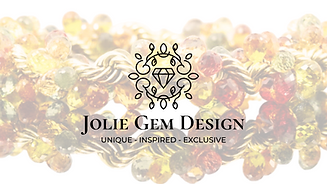What You Need to Know about Lab-Created Gemstones
- Toni Allen
- Dec 31, 2023
- 3 min read
Updated: Feb 12, 2024

Stones created in a lab are physically and optically identical to those mined underground — but they have fewer flaws, a lighter carbon footprint and cost less, too.
Gemstones are minerals. High quality gems are colorful and scintillate as they refract and disperse light, and people have mined natural minerals to cut into gemstones for centuries. They mean something different to each wearer. To some, they're badges of wealth and success — to others, they're simply beloved as a thing of beauty to be enjoyed.
Many mined gemstones are rarer, harder to get, and can be quite expensive. That's why lab-created or "grown" minerals are excellent alternatives to those that are naturally mined.
The more expensive minerals like diamond, sapphire, emerald, ruby and opal are some of the most popular lab-grown gemstones. To be clear, these are not imitations of minerals; lab-created gemstones are as real as their naturally mined counterparts. They are natural crystalline structures grown in specific conditions in a laboratory that mimic the natural conditions of those that grow deep the earth. Therefore, lab-grown minerals are identical physically and optically to natural mined gems.
There are also simulated gemstones which are artificial imitations of natural minerals, but these are not at all the same physically and optically from naturally mined gemstones and are not produced the same way. They are glass or other composites, mostly of poor quality, and cannot refract light or disperse of color that minerals do.
The capacity to disperse light is the primary reason minerals are cut into gemstones. White light is actually composed of a rainbow of colors, and each of those colors is a wavelength of light. When white light passes through a gemstone, each of these colors travel through it at a different speed. The wavelengths previously joined in white light literally break apart or "disperse" and exit the gem separately. This creates a rainbow display of color called scintillation. Both mined gemstones and lab-grown gemstones disperse light and therefore scintillate depending on their quality or inclusions. Simulated imitation gemstones do not do this.
How they’re made
The mineral composition of lab-created stones is created through a process similar to what nature does beneath the earth over the years, but in a lab, this can be accomplished in a fraction of the time. Clarity is the main distinction. Natural mined minerals almost always have inclusions from the crystallization process — gases and other particulates mix together during stone creation. These show up and inhibit the dispersion of light within the stone. Inclusions in the mineral make it difficult to cut into flawless gemstones, and the ones with fewer inclusions are far more expensive than their counterparts.
Because lab-grown stones rely on a steady, controlled process, they have fewer to no inclusions. They are cut into high-quality stones, and their prices are significantly lower than their natural mined counterparts. In addition, many stones are able to be created in colors that nature doesn't often produce.
Other considerations
In addition to getting a quality gemstone for less, many consumers are attracted to lab-created stones for other reasons. Environmentally speaking, lab-created stones do not tax natural resources the way the process for natural gems does — no mines are dug, the labs use a fraction of the utilities and resources necessary for a mining operation and leave behind less pollutants.
Lab-created stone jewelry is great for haute couture jewelry. But whether you’re buying a piece of wearable art, a gift, or simply treating yourself, purchase lab-created gemstone jewelry from a reputable seller who discloses all the details regarding the stone and how to care for it. Unlike diamond and sapphire, many other minerals are soft, and can scratch easily.
It’s worth exploring the possibilities to grow your jewelry wardrobe with classic styles and cutting-edge designs using stunning lab-created stones.







Comments